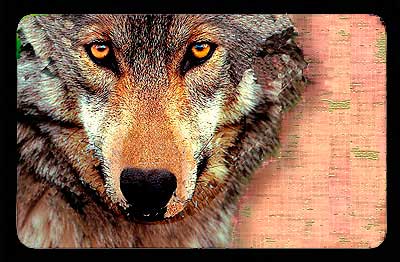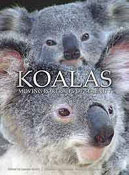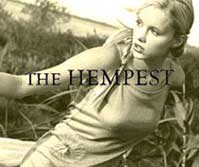Who cries "wolf"
Who decides how many wolves may live in Sweden, the people in Stockholm, Malmö or Gothenburg, far away from wild life, or those living daily, with the predators among them?

In December last year the Swedish government decided to allow the shooting of wolves found inside fenced areas, near livestock, whether attacking or not. Disappointed by this, some reindeer owners said that this ruling was of no benefit in helping to protect their livestock: In fact, just the opposite, they had seen an increase in predation under the rule. The Swedish Nature organisation (SNF) on the other hand was of the opinion that the action was a good one, although they did add that it should have been an obligatory condition that the predator was in the act of attacking livestock, in order to minimize the risk of poaching.
According to a recent report, a healthy population of wolves requires 60-80 packs of approximately 10 animals to each. Today Sweden has only an estimated 14 packs (130-140 animals); inbreeding is therefore a concern. The real question is, is it defensible to hunt such a small population at all?
Many hunters claim that wolves constitute an enormous cost to society, killing scores of valuable sheep, reindeer and hounds each year. On the other hand, there are those who argue there are costs for damages created by all wild animals, from roe deer to seals – moreover there the other animals, considered much more dangerous to humans than wolves, More people are killed or injured in car accidents involving elk or stung in bees attacks than are injured by wolves.
Furthermore, if in fact wolves are no more than an imagined threat to humans, where does fear of the wolf as an enemy of man originate? Traditional children’s tales such as Little Red Riding Hood and The Three Little Pigs, are partly to blame, yet it is interesting that even today newspapers and media reports continue to trigger the fear by using bold headlines such as: “Village in fear”, “Wolves rage” and “We dare not go outside.” Why is a virtually non-existent danger exaggerated in such an extreme manner? Is it merely a means of selling more newspapers? If that is the case, it may be time for editors to consider the impact these stories have on readers. Behind the headlines and the myth, behind the legend and lore is a shy animal whose true nature is to stay hidden a furtive creature that will invariably flee at the mere scent of humans.
Still, there remains another possibility, which is that people are using the “wolf-problem” as a means of resting a degree of control over unrelated difficulties with in their local communities. In many parts of Northern Sweden, unemployment is high. Constantly reduced and inadequate state funding for children’s services and elderly care are cause for increased worry and frustration. Dealing with local matters such as wild life management, people, unable to participate directly in decisions regarding their local environment, may turn their feelings of frustration at government interference into rebellious behaviour, rebellion aimed at politicians, rebellion through action against a surrogate target - the wolf.
In a SNF-report from 2002, Åsa Flodin interviewed people living in the Uppsala region, north of Stockholm. He asked them what they felt were the best solutions to the wolf-problem. The answers came in sharp contrast to the aforementioned decision; laws would have to be crafted on both the regional and national levels. A successful process would it was generally felt, require that local communities be allowed slowly to adapt to having the wolf population lining in close proximity. Furthermore, the consensus was expressed that there must be valid, information made available in schools and other local meeting places, not only about the dwindling number of wolves but with regard to how best to live with wolves, how to manage their presence and how to protect livestock.
One excellent example of cooperative wolf management was a recent eighteen-month project involving representatives from SNF in Gävle and local farmers who, together, erected large fenced areas, not to keep the cattle in but to keep predators out. The fences were 110 cm high, enclosing anywhere from four to six hectares. Reactions, for the most part, were positive; clearly, farmers had nothing intrinsic against wolves, or other predators, as long as their cattle were protected. The only objectors were the hunters, typically because they wanted to be able to set their hounds free and they made a pointed reference to their legal right of access to open countryside. In reality, the hunters were merely endorsing their own outdoor activity above that of the majority of the population and without consideration for the already endangered wolves.
It is clear that people can and always have lived with predators of all types. The solution perhaps then is simply to create awareness amongst all segments of a society, and foster a growing commitment to preserving nature in any form. Keeping the wolf from extinction is a proper place to start.
by Karin Didring
Greener Magazine

In December last year the Swedish government decided to allow the shooting of wolves found inside fenced areas, near livestock, whether attacking or not. Disappointed by this, some reindeer owners said that this ruling was of no benefit in helping to protect their livestock: In fact, just the opposite, they had seen an increase in predation under the rule. The Swedish Nature organisation (SNF) on the other hand was of the opinion that the action was a good one, although they did add that it should have been an obligatory condition that the predator was in the act of attacking livestock, in order to minimize the risk of poaching.
According to a recent report, a healthy population of wolves requires 60-80 packs of approximately 10 animals to each. Today Sweden has only an estimated 14 packs (130-140 animals); inbreeding is therefore a concern. The real question is, is it defensible to hunt such a small population at all?
Many hunters claim that wolves constitute an enormous cost to society, killing scores of valuable sheep, reindeer and hounds each year. On the other hand, there are those who argue there are costs for damages created by all wild animals, from roe deer to seals – moreover there the other animals, considered much more dangerous to humans than wolves, More people are killed or injured in car accidents involving elk or stung in bees attacks than are injured by wolves.
Furthermore, if in fact wolves are no more than an imagined threat to humans, where does fear of the wolf as an enemy of man originate? Traditional children’s tales such as Little Red Riding Hood and The Three Little Pigs, are partly to blame, yet it is interesting that even today newspapers and media reports continue to trigger the fear by using bold headlines such as: “Village in fear”, “Wolves rage” and “We dare not go outside.” Why is a virtually non-existent danger exaggerated in such an extreme manner? Is it merely a means of selling more newspapers? If that is the case, it may be time for editors to consider the impact these stories have on readers. Behind the headlines and the myth, behind the legend and lore is a shy animal whose true nature is to stay hidden a furtive creature that will invariably flee at the mere scent of humans.
Still, there remains another possibility, which is that people are using the “wolf-problem” as a means of resting a degree of control over unrelated difficulties with in their local communities. In many parts of Northern Sweden, unemployment is high. Constantly reduced and inadequate state funding for children’s services and elderly care are cause for increased worry and frustration. Dealing with local matters such as wild life management, people, unable to participate directly in decisions regarding their local environment, may turn their feelings of frustration at government interference into rebellious behaviour, rebellion aimed at politicians, rebellion through action against a surrogate target - the wolf.
In a SNF-report from 2002, Åsa Flodin interviewed people living in the Uppsala region, north of Stockholm. He asked them what they felt were the best solutions to the wolf-problem. The answers came in sharp contrast to the aforementioned decision; laws would have to be crafted on both the regional and national levels. A successful process would it was generally felt, require that local communities be allowed slowly to adapt to having the wolf population lining in close proximity. Furthermore, the consensus was expressed that there must be valid, information made available in schools and other local meeting places, not only about the dwindling number of wolves but with regard to how best to live with wolves, how to manage their presence and how to protect livestock.
One excellent example of cooperative wolf management was a recent eighteen-month project involving representatives from SNF in Gävle and local farmers who, together, erected large fenced areas, not to keep the cattle in but to keep predators out. The fences were 110 cm high, enclosing anywhere from four to six hectares. Reactions, for the most part, were positive; clearly, farmers had nothing intrinsic against wolves, or other predators, as long as their cattle were protected. The only objectors were the hunters, typically because they wanted to be able to set their hounds free and they made a pointed reference to their legal right of access to open countryside. In reality, the hunters were merely endorsing their own outdoor activity above that of the majority of the population and without consideration for the already endangered wolves.
It is clear that people can and always have lived with predators of all types. The solution perhaps then is simply to create awareness amongst all segments of a society, and foster a growing commitment to preserving nature in any form. Keeping the wolf from extinction is a proper place to start.
by Karin Didring
Greener Magazine



10:33 PM









<< Home